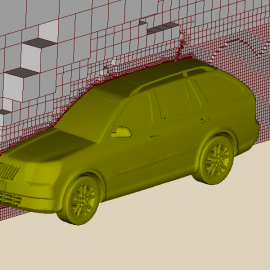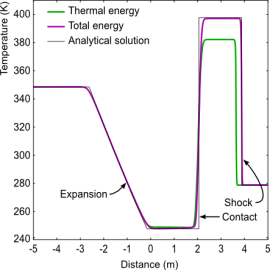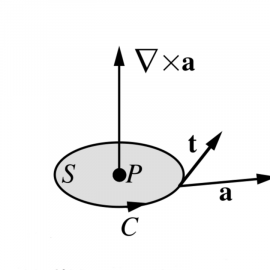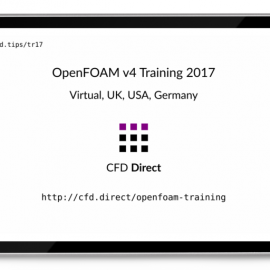The OpenFOAM Issue Tracking system exists to enable users to report issues. An issue exists when OpenFOAM behaves in a manner that does not meet reasonable expectations, including in design and usability. OpenFOAM is mature, quality software, whose successful development demands that issues are resolved in a timely manner. Roadmap development obstructs issue resolution, resulting in unreliable software and inefficient development. Instead, free, open source software can exploit agile development with frequent code release, as the best strategy for CFD development. Users should adopt continuous upgrade to minimize cost and to benefit the agile development strategy.
Computational Fluid Dynamics

Fluid dynamics is concerned with the motion of fluids (liquids and gases) and the forces on them. “Computational” refers to computation of the flow and forces using numerical analysis. We define “computational fluid dynamics” as “the prediction of fluid motion and forces by computation using numerical analysis, generally extended to include heat, thermodynamics, chemistry and solids”. This definition covers a broad range of calculations for numerous scientific and engineering applications, in particular involving heat.
Energy Equation in OpenFOAM

This article provides information on the equation describing conservation of energy relevant to fluid dynamics and computational fluid dynamics (CFD). It first assembles an equation for combined mechanical and thermal energy, i.e. total energy, in terms of material derivatives. It then presents an equation for thermal, or internal, energy. The total energy equation is then provided in terms of local (partial) derivatives, both in terms of internal energy and enthalpy. The implementation of the energy equation in solvers in OpenFOAM is then described.
Tensor Mathematics

This article provides information on tensor mathematics, relevant to fluid dynamics and computational fluid dynamics (CFD). It describes scalars and vectors and typical algebraic vector operations. It follows with second rank tensors, their algebraic operations, symmetry, skewness and tensor invariants such as trace and determinant, higher rank tensors, co-ordinate system and change of axis. Tensor calculus is introduced (div, grad, curl and Laplacian), followed by integral theorems of Gauss and Stokes, with a physical representation of div and curl, and more.
OpenFOAM Linux Guide

This guide provides information and example terminal commands for Linux, relevant to users of OpenFOAM. Commands are written that refer to OpenFOAM, e.g. they include OpenFOAM Linux environment variables. Those commands that refer to OpenFOAM will only function as stated, if they are executed on a machine on which OpenFOAM is installed and the user’s environment variables are set up for OpenFOAM, e.g. as described in the source download page (see Setting Environment Variables).
OpenFOAM v4 Training 2017

In 2017, CFD Direct are running sessions of their OpenFOAM Training courses — Essential CFD, Applied CFD and Programming CFD — fully updated with the latest features of the new version 4 release of OpenFOAM: 24-27 April 2017, Berlin Germany; 16-18 May, Virtual Asia-Pacific; 20-21 June, 26-27 June, Virtual Americas; 4-5 July, London UK; 12-13 Sept, Virtual Americas; 25-28 Sept, London UK; 16-19 October, Chicago USA. OpenFOAM v4 contains new functionality we introduced in OpenFOAM v4 to improve usability so our course participants spend less time struggling with quirks of the software, leaving more time to build and practice their CFD skills.

